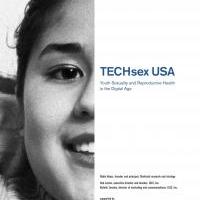
Ford-Supported Report Shines Spotlight on Youth Sexual Health in Digital Age
[Source: ISIS, January 19, 2012]
 Over the past eight years, as US school-based sex education efforts focused on abstinence-only models, the field of sexuality and reproductive health education moved outside the classroom and into the world of technology, expanding access to critical health information in a manner consistent with today’s youth culture. In 2011, one can count literally hundreds of online and mobile programs conducting awareness, outreach, advocacy, and parent-engagement activities.
Over the past eight years, as US school-based sex education efforts focused on abstinence-only models, the field of sexuality and reproductive health education moved outside the classroom and into the world of technology, expanding access to critical health information in a manner consistent with today’s youth culture. In 2011, one can count literally hundreds of online and mobile programs conducting awareness, outreach, advocacy, and parent-engagement activities. These sites and programs provide sexual health information and encourage professional development to advance the field of sexuality and reproductive health education. While the number of programs and activities continues to grow, concerns about the quality and sustainability of efforts, particularly for underserved youth populations and their parents, continue to hamper broader, more widespread acceptance and use. Lack of technical standards and professional guidance have led to a dizzying array of choices without a clear sense of what works and why. A fundamental question, “Do we go where youth are and send messages; or do we build and ask them to come to us?” has never been examined in depth, although conventional wisdom, lore, and organizational self-promotion have declared one or the other to be “most effective.” ( The associated question, “Do youth respond better to digital content created by other youth, or would they prefer to get information online from experts?” has also never been answered confidently or scientifically.)
The resulting impasse has forced professionals to make decisions based on their own technology comfort level, capacity for using new technology, and organizational constraints, instead of the value of their own knowledge and experience and the needs and actions of their audience to create new evidence-based models for sexuality education.
In 2010, ISIS, Inc. received funding from the Ford Foundation to begin a dialogue with stakeholders to better understand the environment and examine measures to ensure quality and standards around sexual and reproductive health education and digital media. The focus of this project was to understand how youth and young adults, especially urban youth of color, use technology for their sexual and reproductive health and to determine interest in new digital programming concepts to advance the field.
This white paper provides an overview of the current youth sexual health and digital landscapes.
It also provides insight into how youth and young adults, particularly youth of color, use technology to learn, communicate, and discuss sexual and reproductive health. It highlights specific needs and usage patterns of underserved populations, determines awareness and success of various digital services, ascertains interest in new digital programs, and provides recommendations and opportunities for the field of sexual and reproductive health.
Dowload the full report at http://www.isis-inc.org/techsex_usa.php.


